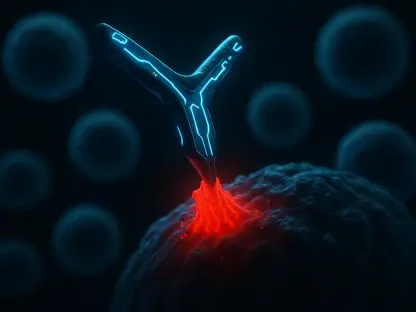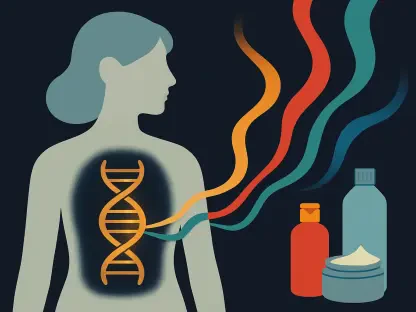Ivan Kairatov’s extensive experience in research and development within the biopharma industry offers invaluable insights into the innovative approaches transforming precision oncology. Today, he shares his expertise on the recent advancements in treating soft tissue sarcomas (STS), emphasizing the potential for precision medicine to revolutionize cancer treatment strategies.
Can you explain what soft tissue sarcomas (STS) are and why they are challenging to treat?
STS are a diverse group of malignant tumors that occur in connective tissues like muscles, fat, and blood vessels. Their rarity and heterogeneity make them particularly challenging to treat. Conventional chemotherapy often fails due to the unpredictable responses, which stem from the unique biological characteristics of each tumor.
What is the significance of STS representing 20% of pediatric and young adult malignancies?
The disproportionate impact of STS on young populations is significant because it affects individuals during crucial developmental stages. This highlights an urgent need for effective treatments, as these patients have the potential for longer lifespans if their cancers can be effectively managed or cured.
How does the rarity and biological diversity of STS tumors affect clinical trials?
The rarity and diversity of STS pose obstacles for large-scale clinical trials, as gathering a homogenous patient group is difficult, leading to less statistical power in research. This necessitates innovative trial designs and collaborative efforts to test new treatment approaches effectively.
What is precision medicine, and how does it differ from conventional chemotherapy in treating STS?
Precision medicine customizes treatment based on individual genetic, environmental, and lifestyle factors, offering targeted options tailored to the specific characteristics of a patient’s tumor. Unlike chemotherapy’s one-size-fits-all approach, precision medicine aims to enhance efficacy while minimizing side effects.
What is the Quadratic Phenotypic Optimisation Platform (QPOP), and how does it work?
QPOP is a cutting-edge data-driven platform that leverages phenotypic screening to pinpoint optimal drug combinations for treating specific cancers. It evaluates a wide array of drugs and investigational treatments, identifying promising combinations within a rapid seven-day timeframe.
How did QPOP improve the treatment selection for STS patients in your study?
In our study, QPOP demonstrated remarkable precision in predicting patient responses to drugs. By analyzing tumor characteristics, it helped select effective personalized treatment combinations, especially for patients who did not respond to standard therapies, leading to better clinical outcomes.
Can you describe the process of screening tumor samples with QPOP and how long it takes?
The screening process begins with collecting patient-derived tumor samples. These samples undergo ex vivo testing through QPOP’s comprehensive drug panel, evaluating responses to pinpoint the most effective combinations. This efficient process offers results in just seven days.
How accurate was QPOP in predicting drug sensitivity for STS patients?
Our results were promising, with over 70% accuracy in predicting patient responses to standard treatments. This high level of reliability underscores the platform’s potential to transform treatment strategies by enhancing precision in challenging cases.
What are unconventional personalized drug combinations, and how did you identify them for STS patients?
These unconventional combinations are unique blends of therapies that deviate from standard treatment paradigms. Through QPOP’s nuanced analysis, we identified tailored combinations suitable for patients unresponsive to traditional treatments, showcasing the platform’s innovative capacity in individualized medicine.
Could you provide examples of compelling clinical responses seen in patients who received targeted treatments?
In our study, two patients receiving QPOP-selected therapies demonstrated remarkable tumor shrinkage and improved disease management. These case studies highlight the promise of precision medicine in achieving significant responses where other treatments have failed.
Why is the combination of AZD5153 and pazopanib considered more effective than standard treatments?
This combination effectively targets the MYC oncogene and associated pathways, which are notoriously challenging to inhibit. The dual approach of inhibiting BRD4 and blocking multiple kinases enhances treatment efficacy, as evidenced by our successful in vivo and cell line studies.
How does this combination therapy target the MYC oncogene and related pathways?
By focusing on BRD4 inhibition and multi-kinase blockade, we can suppress MYC expression and disrupt pathways critical to tumor survival and growth. This multi-pronged approach offers a strategic advantage, potentially outperforming conventional therapies.
What roles did Assistant Professor Valerie Yang and other key researchers play in the study?
Assistant Professor Yang led the research efforts, coordinating the interdisciplinary collaboration among experts in oncology, bioinformatics, and drug development. Her leadership was pivotal in translating the team’s scientific discoveries into clinical applications, driving the research forward.
How does this study mark a turning point in treating rare and aggressive cancers like STS?
This study represents a significant leap forward by validating precision medicine’s role in improving patient outcomes for rare cancers. It opens the door to functional genomics and tailored therapies, laying groundwork for new standards in cancer treatment beyond conventional methods.
Are there plans for further clinical trials to explore the broader applicability of QPOP in other cancers?
Yes, there are plans to conduct additional trials to test QPOP’s versatility across various cancer types. These efforts aim to substantiate the platform’s potential to enhance precision medicine and optimize treatment strategies, ultimately broadening its impact on oncology.
Why is it important to explore the broader applicability of QPOP?
Exploring QPOP’s applicability in different cancers could revolutionize cancer treatment by offering a personalized approach based on tumor-specific characteristics. This could improve outcomes and reduce toxicity, providing hope in areas where existing therapies are insufficient.
What are the next steps for your research team in terms of advancing this study?
The next phase involves expanding clinical trials to further validate our findings and refine QPOP’s algorithm. We aim to enhance its predictive accuracy, explore additional drug combinations, and solidify its role as a cornerstone in precision oncology.
Do you have any advice for our readers?
Embrace curiosity and informed awareness when considering cancer treatments. Engage with healthcare professionals who incorporate cutting-edge technologies and personalize approaches to ensure you’re receiving the best possible care tailored to your unique needs.









